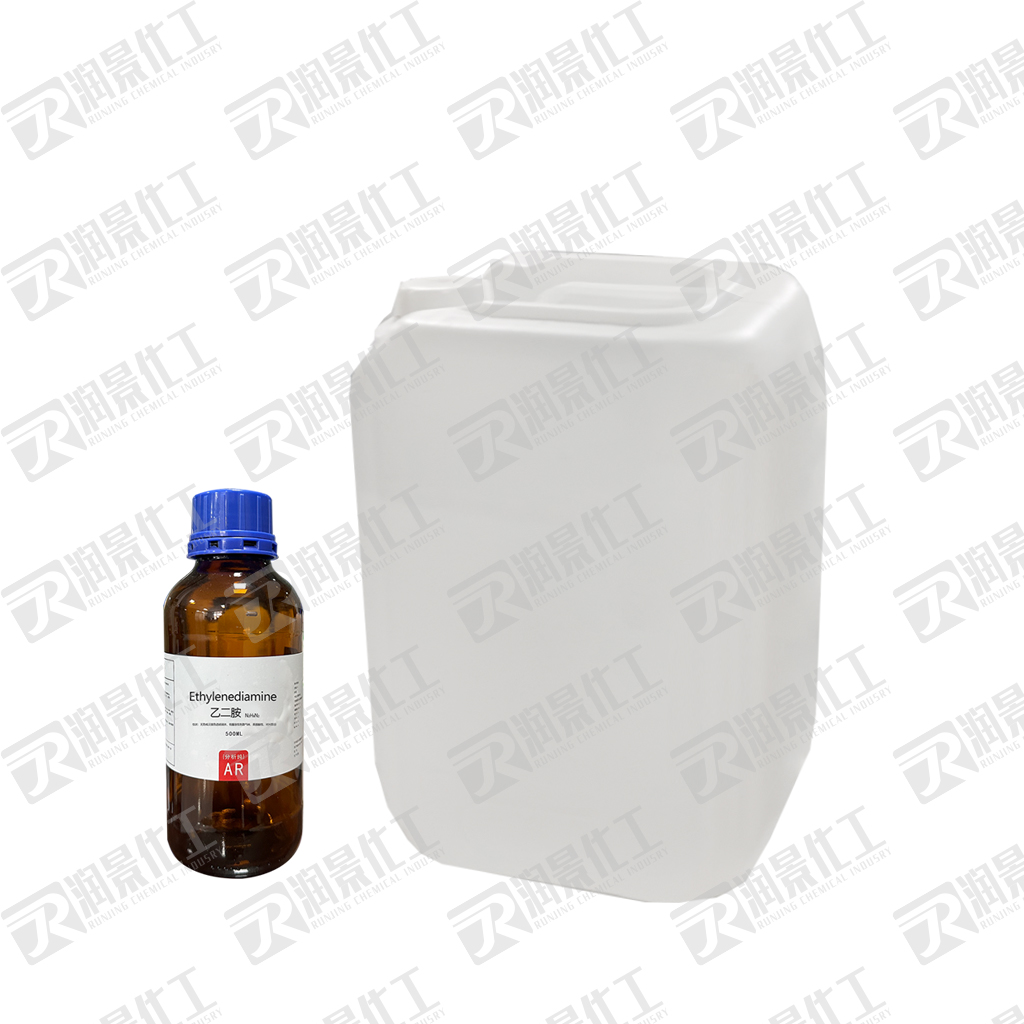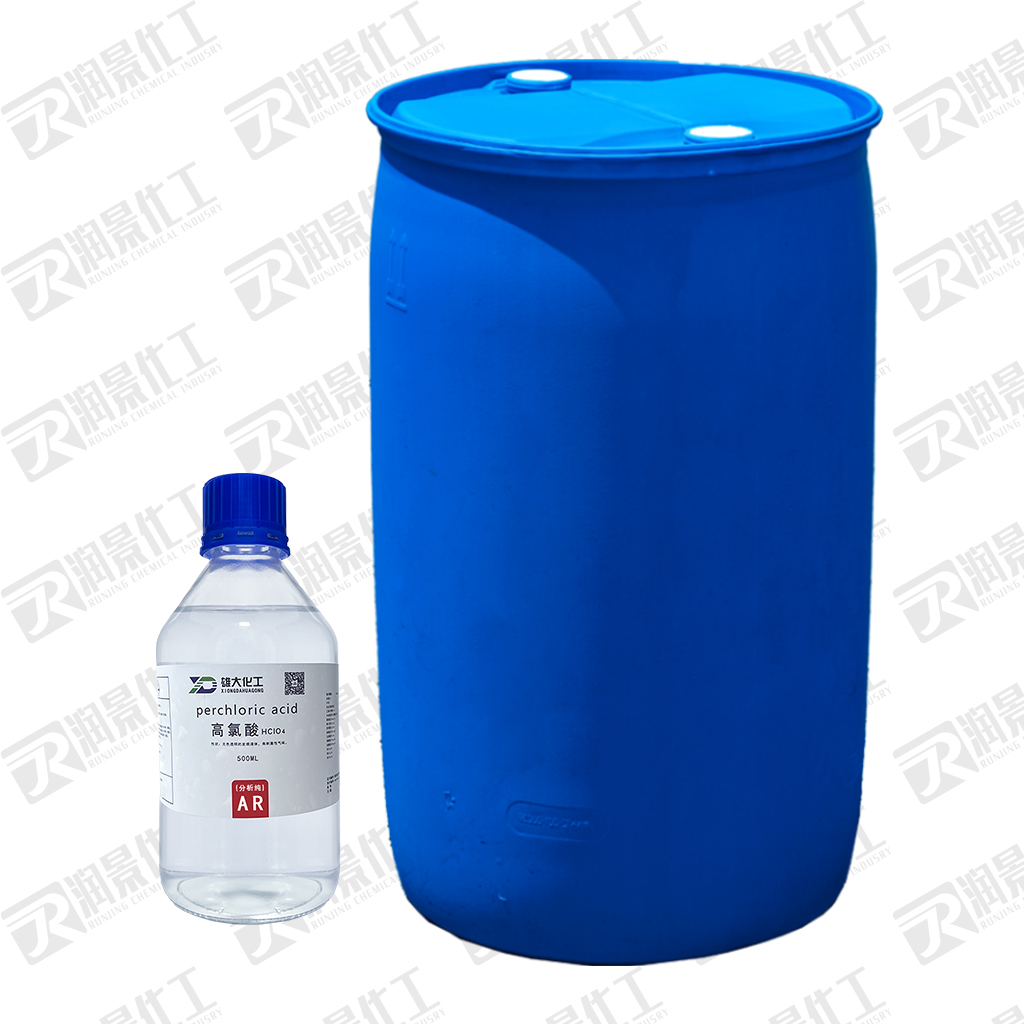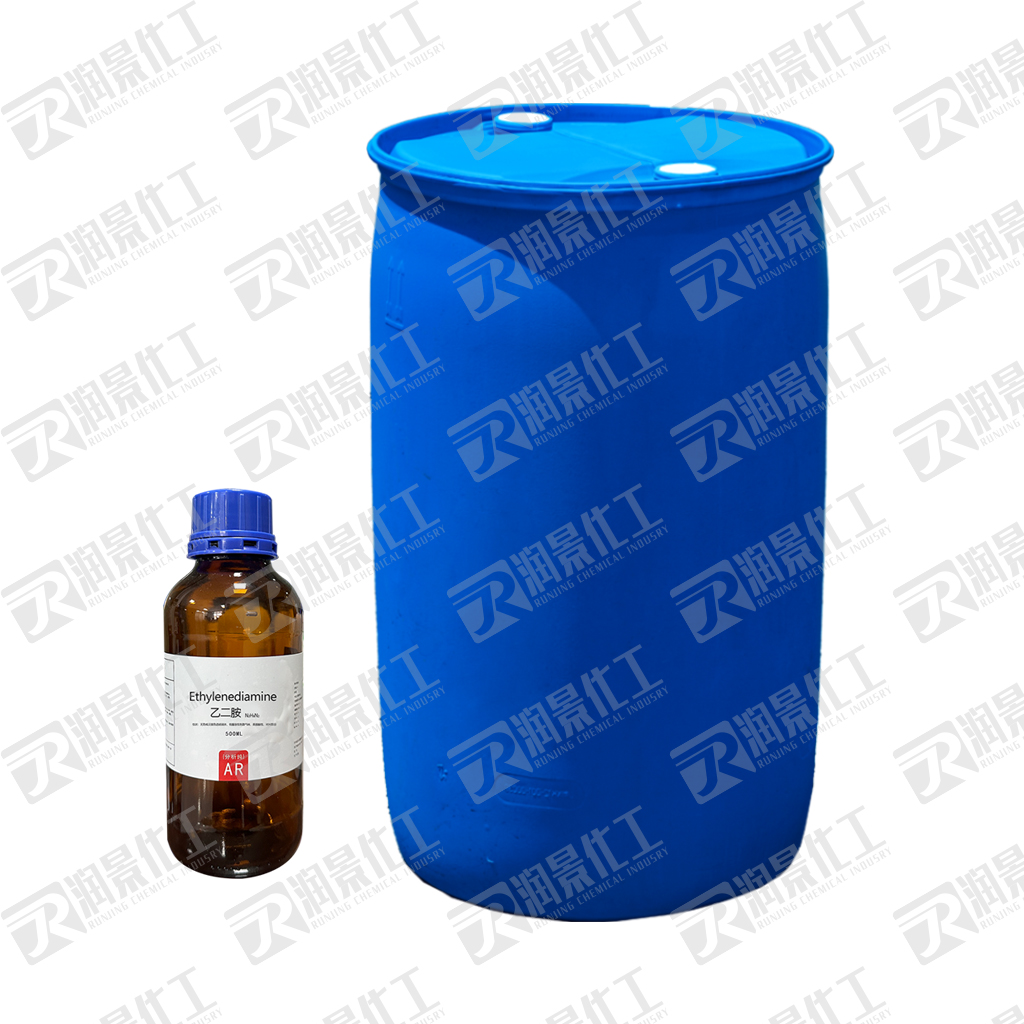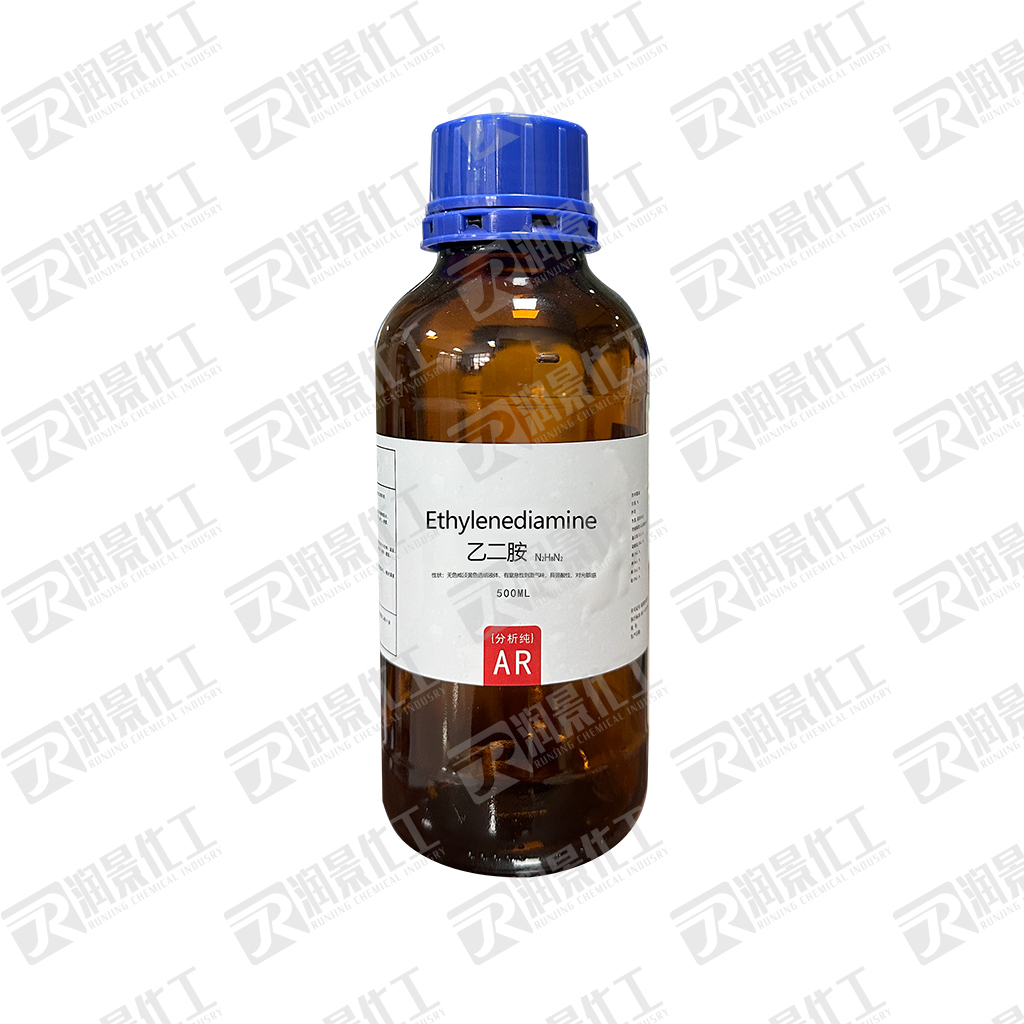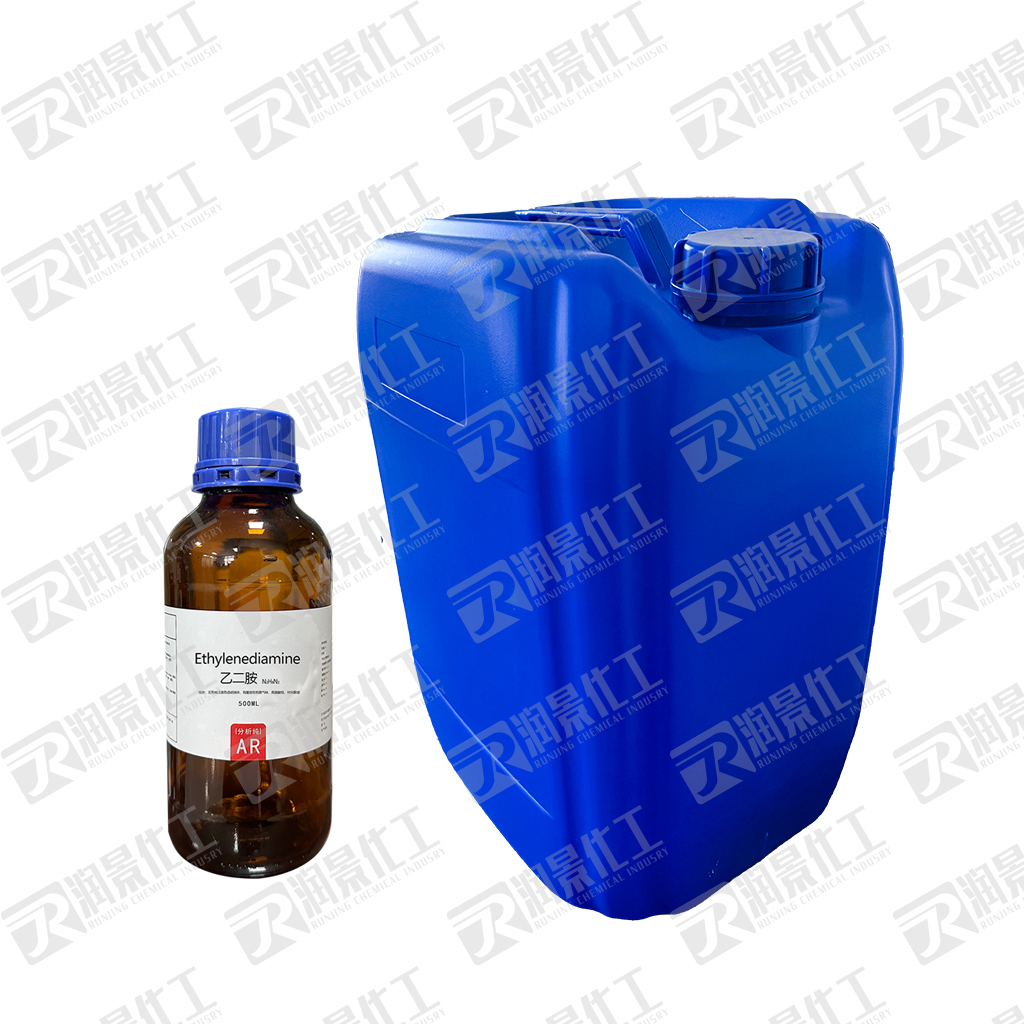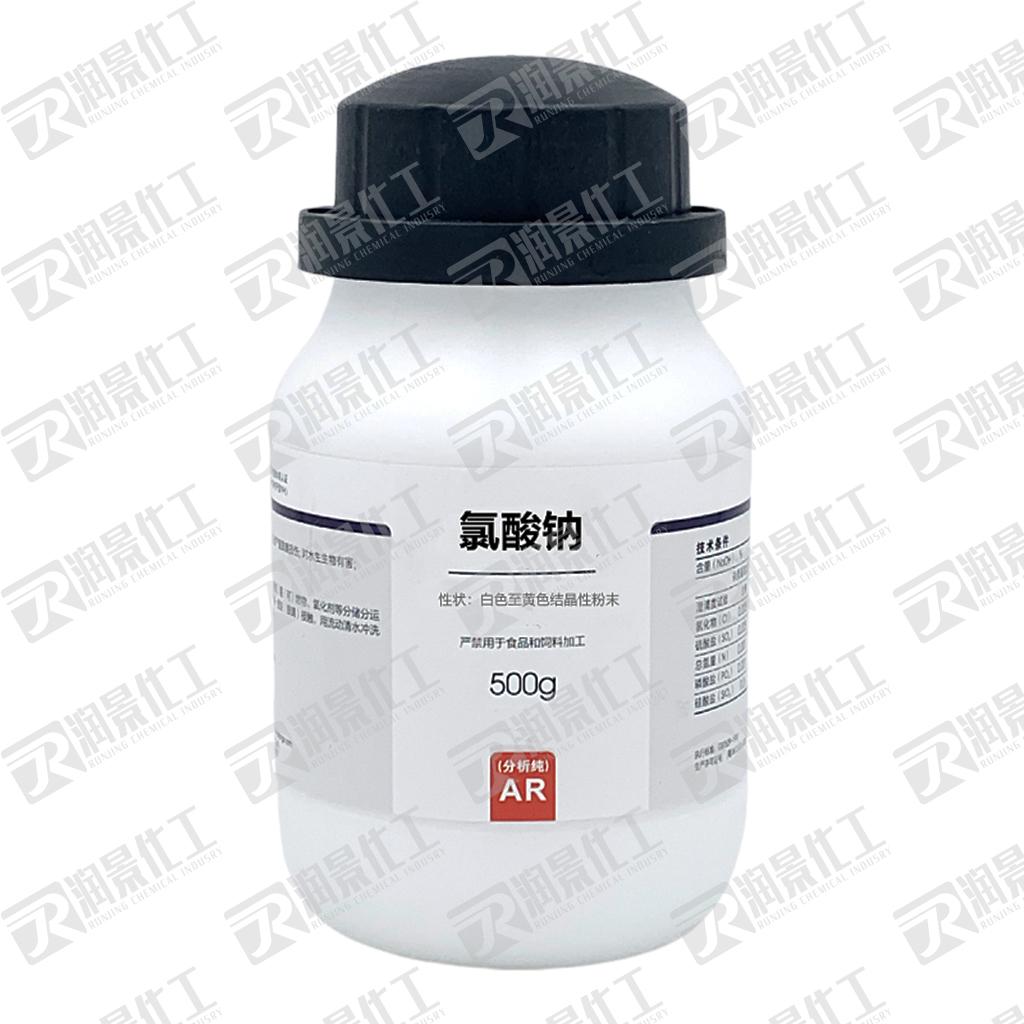We are a professional supplier of Ethylenediamine CAS No.: 107-15-3, Molecular Formula: C₂H₈N₂, offering high quality Ethylenediamine products, which are widely used in the synthesis of chemicals, pharmaceuticals, pesticides and surfactants. We offer different packaging specifications to meet the needs of various industries and ensure fast delivery and excellent service.
Preparation:
Ethylenediamine, CAS No. 107-15-3, molecular formula C₂H₈N₂, is usually prepared by the following methods:
-
Reaction of ammonia and ethylene
Ethylenediamine is commonly prepared by the reaction of ethylene with ammonia. This reaction usually requires high temperatures and catalyst conditions. In the reaction, ethylene reacts with ammonia in an addition reaction to form ethylenediamine. -
Hydrogenation of diaminoethylene
Another method is to obtain ethylenediamine from the hydrogenation of diaminoethylene. In this process, diaminoethylene is treated with hydrogen and converted to ethylenediamine. -
Aminoethylene amination
The intermediates generated through aminoethylene chemistry are further aminated to produce ethylenediamine.
Applications:
Ethylenediamine is widely used in several industrial fields, mainly including:
-
chemical synthesis
Ethylenediamine, as an intermediate of organic chemicals, is widely used in the synthesis of surfactants, plasticizers, chelating agents and other chemicals, especially in the synthesis of resins, adhesives, emulsion polymerization and other processes. -
Pharmaceutical industry
In the pharmaceutical field, ethylenediamine is used as an intermediate in the synthesis of a wide range of drugs. For example, it is a key ingredient in the synthesis of certain antibiotics and antiviral drugs. Ethylenediamine is also an intermediate in the synthesis of certain anticancer drugs. -
Pesticide industry
Ethylenediamine is widely used in the synthesis of pesticides such as herbicides, insecticides and fungicides. It plays an important role in the preparation of some plant protection chemicals and can improve the efficacy of these products. -
rubber industry
As an accelerator, ethylenediamine is used in the rubber industry, mainly as a catalyst for the rubber vulcanization reaction and as an antioxidant to enhance the durability and stability of rubber. -
dyestuffs industry
Ethylenediamine is an important intermediate in the synthesis of many dyes and is widely used in the synthesis of acid dyes, disperse dyes and so on. -
Water treatment and gas purification
Ethylenediamine is often used as a water treatment agent and gas purification agent to effectively remove metal ions from water and for adsorption of acidic gases.
Hazardous materials labeling:
Ethylenediamine is a hazardous chemical and therefore requires special attention to safety in storage, transportation and use. According to the GHS Globally Harmonized System of Classification and Labelling of Chemicals, ethylenediamine has the following hazards and markings:
-
corrosiveness
markings: Corrosivity (symbol: corrosion)
dangerousness: Ethylenediamine is strongly alkaline and may cause serious injury in direct contact with skin, eyes and respiratory system, resulting in skin corrosion, eye damage or respiratory irritation. -
poisonous
markings: Skull and Bones (Symbol: Toxic)
dangerousness: Ethylenediamine is toxic to humans and prolonged exposure may cause toxic reactions, inhalation of vapors or liquids, or absorption through the skin may result in health problems such as headaches, nausea, vomiting, and difficulty breathing. -
flammable
markings: Flame (symbol: flammable)
dangerousness: Ethylenediamine is flammable, has a flash point of 38°C and needs to be stored and used away from sources of ignition. Liquid vapors can form explosive mixtures when mixed with air, increasing the risk of fire. -
environmental hazard
Spills of ethylenediamine can be hazardous to aquatic organisms and the environment and therefore need to be kept out of water and soil.
Security measures:
-
personal protection
Protective equipment such as protective gloves, protective glasses and respirator should be worn during use to avoid contact of ethylenediamine with skin and eyes and to prevent inhalation of vapors. -
Ventilation requirements
Places where ethylenediamine is used and stored should be well ventilated to avoid accumulation of harmful gases. -
emergency treatment
In the event of spillage or exposure, immediately flush contaminated areas, especially skin and eyes, with plenty of water and seek medical assistance if necessary.


